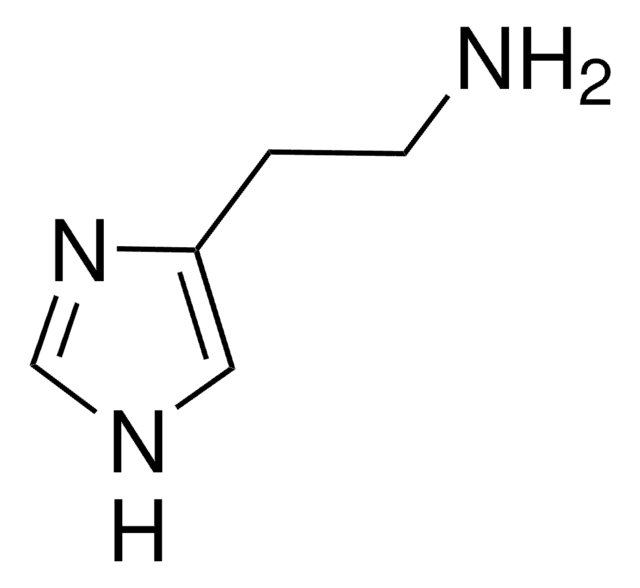49761
Spermidine
analytical standard
Sinonimo/i:
1,8-Diamino-4-azaoctane, N-(3-Aminopropyl)-1,4-diaminobutane
About This Item
Prodotti consigliati
Grado
analytical standard
Livello qualitativo
Saggio
≥97.5% (NT)
≥99.0% (GC)
Durata
limited shelf life, expiry date on the label
tecniche
HPLC: suitable
gas chromatography (GC): suitable
Indice di rifrazione
n20/D 1.479 (lit.)
Densità
0.925 g/mL at 25 °C (lit.)
applicazioni
cleaning products
cosmetics
food and beverages
personal care
Formato
neat
Temperatura di conservazione
2-8°C
Stringa SMILE
NCCCCNCCCN
InChI
1S/C7H19N3/c8-4-1-2-6-10-7-3-5-9/h10H,1-9H2
ATHGHQPFGPMSJY-UHFFFAOYSA-N
Cerchi prodotti simili? Visita Guida al confronto tra prodotti
Descrizione generale
Applicazioni
Azioni biochim/fisiol
Confezionamento
Avvertenza
Avvertenze
Danger
Indicazioni di pericolo
Classi di pericolo
Eye Dam. 1 - Skin Corr. 1B
Codice della classe di stoccaggio
8A - Combustible corrosive hazardous materials
Classe di pericolosità dell'acqua (WGK)
WGK 3
Punto d’infiammabilità (°F)
233.6 °F - closed cup
Punto d’infiammabilità (°C)
112 °C - closed cup
Scegli una delle versioni più recenti:
Possiedi già questo prodotto?
I documenti relativi ai prodotti acquistati recentemente sono disponibili nell’Archivio dei documenti.
I clienti hanno visto anche
Protocolli
HPLC Analysis of Biogenic Amines on Ascentis® RP-Amide
Il team dei nostri ricercatori vanta grande esperienza in tutte le aree della ricerca quali Life Science, scienza dei materiali, sintesi chimica, cromatografia, discipline analitiche, ecc..
Contatta l'Assistenza Tecnica.











